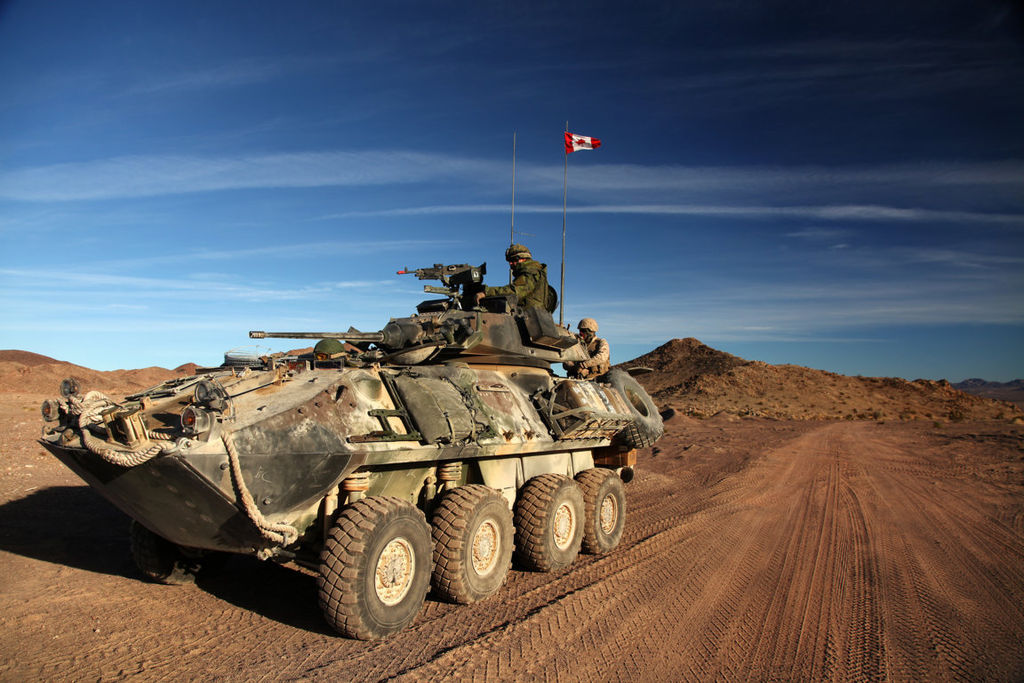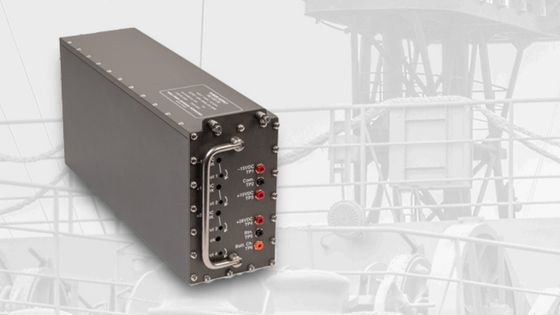Military power supplies are designed to provide reliable power in a wide range of harsh environments, conditions, and climates. A Military Power Supply must be compliant to one or more of the input standards such as MIL-STD-704 for aircraft, MIL-STD-1399 for ships, and MIL-STD-1275 for ground vehicles. To be considered “rugged,” power supplies must also meet any number of the environmental specifications described in MIL-STD-810 or other similar specifications. Read on to discover seven military standards for ruggedized power supplies.
Features of a Military Power Supply
Ruggedized power supplies are built to numerous environmental specifications to be able to operate under harsh conditions. Here are some of the key features of a military power supply:
- Resistance to extreme temperatures that range from below-40°C to above 80°C
- Noise reduction due to tactical needs
- Shock and vibration resistance for military-style transporting and weaponry impacts
- Rugged design and assembly that can withstand thermal shocks, lightning strikes, and power spikes
- Ability to operate at high altitude and in cockpit conditions
- Protective casings that can survive repeated drops
- Sealed hermetic packaging for waterproofing and resistance to humidity
Seven Military Standards Used to Design and Qualify a Power Supply
Whether you need a ruggedized power supply for an aircraft, ship, or military ground vehicle, it must first meet certain standards. We’ve identified seven military standards for ruggedized power supplies that are important to know.
1. MIL-STD-704 Aircraft Electric Power Characteristics
MIL-STD-704 defines the permissible characteristics of the aircraft power system that ruggedized aircraft power supplies are powered by. The standard specifies compatibility, operation, testing, and power utilization requirements. It applies to all three-phase or single-phase wire-connected grounded neutral systems.
MIL-STD-704 ensures compatibility between the airplane power system, external power and any aircraft utilization equipment. It provides aircraft power system manufacturers with the requirements that the user power supplies require at their input power terminals.
2. MIL-STD-1399 (SECTION 300) Low Voltage Electric Power, Alternating Current
A MIL-STD-1399 power supply must comply with the established electrical interface characteristics for shipboard equipment. This ensures compatibility between the electric power system and user equipment.
The standard defines electric power system characteristics and their tolerances along with test methods and requirements for ensuring the power system is compatible with the shipboard user equipment.
The procedures and policies that are established by MIL-STD-1399 (Section 300) are mandatory and intended to be viewed as a single integral document for the design and testing of rugged power supplies for use as shipboard user equipment.
3. MIL-STD-1275 Characteristics of 28 VDC Input Power to Utilization Equipment in Military Vehicles
MIL-STD-1275 is the standard for the electrical power distribution system on military ground vehicle platforms. It defines the operating voltage limits and transient voltage characteristics of the 28-Vdc power supply at the input of the utilization equipment.
A MIL-STD-1275 power supply must be able to operate when exposed to the defined voltage transients, both surges and spikes, and supply well-regulated, clean power to its loads.

4. MIL-STD-810 Test Method Standard Environmental Engineering Considerations and Laboratory Tests
MIL-STD-810 is a key military standard for rugged power supplies. It provides engineering direction for considering the influences that environmental stresses have on products during their lifetime. It provides environmental tailoring processes that result in realistic product designs, and test methods based on system performance requirements. Successful application yields power supplies able to perform in extreme real-world conditions.
Among the most important MIL-STD-810 tests for military power supplies, you’ll find temperature testing (high temperature, low temperature, and thermal shock), humidity testing, shock and vibration testing.
However, MIL-STD-810 has over 29 different test methods, each designed for specific conditions but not all applicable to power supplies. In addition to being used to qualify products for the military, this standard is often applied to commercial products.
5. MIL-STD-461 Requirements for the Control of Electromagnetic Interference Characteristics of Subsystems and Equipment
MIL-STD-461 establishes the electromagnetic interference (EMI) and electromagnetic compatibility (EMC) requirements for military ruggedized power supplies. Compliance with the standard is key to ensuring satisfactory performance of all equipment within a system.
The tests performed under MIL-STD-461 include:
- Conducted emissions
- Conducted susceptibility
- Radiated emissions
- Radiated susceptibility
When a ruggedized power supply successfully passes the MIL-STD-461 tests, it is considered qualified for the intended application. Its use in a different system would require repeat testing against the application specific environmental criteria.
6. MIL-STD-167 Mechanical Vibrations of Shipboard Equipment
Shipboard equipment is exposed to a wide range of vibration spectra from the roll, pitch, yaw, surge, sway and heave of the vessel to internal vibrations from rotating or reciprocating machinery.
The military standards MIL-STD-167-1 and -2 are the standards that specify the procedures and establish requirements for environmental and internally excited vibration testing of Naval shipboard equipment.
MIL-STD-167-1 applies to equipment that is installed on ships propelled by conventionally shafted propulsion systems and addresses mechanical vibrations from the environment and from internal excitation caused by unbalanced rotating machinery. MIL-STD-167-2 is a classified document that addresses mechanical vibrations from reciprocating machinery and lateral and longitudinal vibrations of propulsion systems and shafting.
Testing a power supply to MIL-STD-167 ensures that it will perform as intended when exposed to the specific types of vibration encountered on board ships.
7. BONUS – RTCA/DO-160 Environmental Conditions and Test Procedures for Airborne Equipment
RTCA/DO-160 covers the environmental test criteria and standard procedures to test airborne equipment. Similar to MIL-STD-810, DO-160 testing includes over 20 different types of tests, including vibration, shocks and crash safety, temperature, magnetic effect, voltage spikes and electrostatic discharge.
DO-160 and MIL-STD-810 are two of the most common types of testing standards used to stress-test and ruggedize power supplies for aircraft equipment. The RTCA/DO-160 tests are specific to ruggedized power supplies to be used in all types of aircraft, whereas MIL-STD-810 is applicable across all environmental applications.
Conclusion
From MIL-STD-704 to MIL-STD-167, military standards play an important role in ensuring safe and reliable power for all types of military ships, ground vehicles and aircraft, plus commercial aircraft. While some standards such as MIL-STD-810 can be used to test power supplies for any environment, others ensure compliance of power supplies for specific military applications such as naval, aerospace and ground. It is important to note that a combination of standards is often used when qualifying a rugged power supply for military use.
Regardless of the environmental conditions, you can count on the reliability of a ruggedized power supply from Viable Power. We put our power supplies through extensive testing to ensure they meet all your requirements and appropriate military standards. Contact us for more information on our expertise and capabilities.



